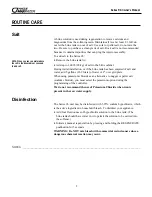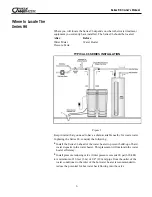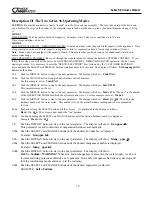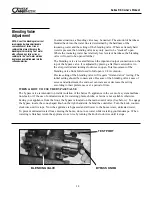
Blending Valve
Adjustment
In some situations, a blending valve may be desired. The amount of hardness
blended back into the water line is determined by the hardness of the
incoming water and the setting of the blending valve. Where extremely hard
water is present, the blending valve may only need to be “cracked” open.
Where the incoming water has relatively low levels of hardness, the blending
valve will need to be opened further.
The blending valve is located between the input and output connections on the
top of the bypass valve. It is adjusted by placing a flat blade screwdriver in
the slot provided and turning clockwise to open. Total movement of the
blending valve from full closed to full open is 1/4 revolution.
Precise setting of the blending valve will require “trial and error” testing. The
initial setting should be conservative. Because of the blending valve's ease of
access and adjustment, the end user can increase or decrease the setting
according to their preference over a period of time.
WHEN & HOW TO USE THE BYPASS VALVE
The bypass valve is intended to provide isolation of the Series 96 appliance in the event of a system malfunc-
tion, leak, or if the use of untreated water for watering plants, shrubs, or lawns is not available otherwise.
Facing your appliance from the front, the bypass is located on the main control valve (See below.) To engage
the bypass, locate the cone-shaped knob on the right hand side, behind the controller. Turn the knob counter-
clockwise until it stops. Now the appliance is bypassed and all water to the home is raw, untreated water.
To prevent untreated water from entering the home, do not use water while watering your landscape. When
watering is finished, return the appliance to service by turning the knob clock-wise until it stops.
Series 96 Owner’s Manual
14
TEST PORT
BYPASS KNOB
BLENDING VALVE
NOTE: Use of the blending valve is not
recommended where objectionable
concentrations of ferrous iron or
sediment are present. Because the
blending valve is mixing “raw” water
with softened, any ferrous iron or
sediment in the “raw” water will also
be blended and reintroduced into the
softened water line.
















































